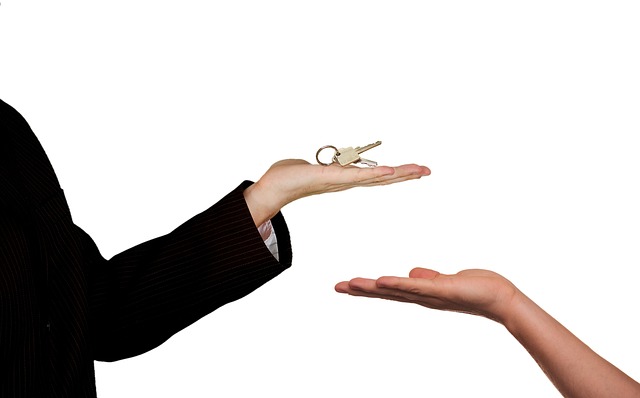Mold in rental homes is a serious health and safety concern caused by dampness and poor ventilation. Tenants should promptly report moisture or musty smells, while landlords must take proactive steps like regular cleaning, leak repair, and proper ventilation to prevent mold growth. Collaboration through inspections and swift action protects tenants' health, especially vulnerable groups, and maintains property value. Documenting evidence through photos and records aids communication with landlords for effective resolution.
“Uncovering and addressing mold issues in rental properties is a vital step in ensuring tenant health and safety. This comprehensive guide navigates the complex landscape of mold in rental homes, equipping tenants with essential knowledge. We explore the causes and associated health risks, provide an extensive checklist for inspecting your space, and offer practical tips on documenting evidence through photography. By understanding your rights and taking proactive measures, you can effectively communicate concerns to landlords, fostering a healthier living environment.”
- Understanding Mold: Causes and Health Risks in Rentals
- Inspecting Your Rental: Identifying Visible Signs of Mold
- Documenting Mold: Photographing and Recording Evidence
- Communicating with Landlords: Reporting and Addressing the Issue
- Preventive Measures: Mitigating Mold Growth in Rental Homes
Understanding Mold: Causes and Health Risks in Rentals

Mold in rental homes is a significant concern for tenants and landlords alike. Understanding its causes is the first step to addressing it effectively. Mold thrives in damp, humid environments where water leaks or poor ventilation exist. It can develop unseen within walls, under flooring, or behind appliances, making early detection challenging. In rental properties, mold issues often arise from plumbing leaks, inadequate drainage, or improper insulation. Tenants should be vigilant about reporting any signs of moisture or musty smells promptly to their landlords.
Health risks associated with mold exposure vary from mild to severe. Short-term effects include respiratory irritation, coughing, and allergic reactions. Prolonged exposure may lead to more serious health issues such as chronic sinusitis, asthma exacerbation, and even neurological symptoms. Children, the elderly, and individuals with pre-existing respiratory conditions are particularly vulnerable. It’s crucial for tenants and landlords to collaborate in regularly inspecting rental homes and addressing mold problems promptly to ensure a safe living environment.
Inspecting Your Rental: Identifying Visible Signs of Mold

When inspecting your rental home for potential mold issues, start by looking for any visible signs. Check walls, ceilings, and corners for stains or discolored patches. Mold can appear as spots ranging from black to green to white, often accompanied by a musty smell. Pay close attention to areas with high moisture content, such as bathrooms, kitchens, and basements. Peeling paint, warped wood, and distorted drywall are also indicators of a potential mold problem. If you notice any of these signs, don’t hesitate to document them with photos for future reference and to support any necessary repairs or discussions with your landlord or property manager.
Documenting Mold: Photographing and Recording Evidence

When documenting mold issues in rental homes, visuals are key. Mold in rental homes can often be subtle and hidden, making it crucial to capture every detail through high-quality photographs. Start by capturing overall images of the affected areas, noting the extent of the damage and any visible signs like discoloration or water stains on walls, ceilings, or floors. Zoom in on specific mold growth, ensuring you record both close-up and wide-angle shots for comprehensive documentation.
In addition to photography, keep a detailed record of your findings. Note the date and time of inspection, the specific locations where mold is present, and any symptoms experienced by occupants. This textual evidence complements your visual documentation, providing a complete picture of the mold in rental homes that can be used for further assessment or legal purposes.
Communicating with Landlords: Reporting and Addressing the Issue

When dealing with mold issues in a rental property, clear communication with your landlord is paramount. Start by documenting evidence of mold growth through photos and detailed descriptions of affected areas. Note the date and location of each observation to provide a timeline for the problem. Next, compile a list of symptoms experienced by all household members to showcase the impact on health and well-being. Present this information in a respectful yet firm manner when reporting the issue to your landlord.
Encourage open dialogue about potential causes and desired resolutions. Propose immediate steps like temporary repairs or evacuation for safety while awaiting long-term solutions, such as professional remediation. Regularly follow up with landlords to ensure timely action and keep detailed records of all communications, including any agreements or promises made regarding the mold issue in your rental home.
Preventive Measures: Mitigating Mold Growth in Rental Homes

Preventing mold growth is an essential step in maintaining a healthy and safe living environment for tenants in rental homes. Landlords can take several proactive measures to mitigate mold issues before they arise. Regular and thorough cleaning, especially in areas prone to moisture accumulation like bathrooms and kitchens, is key. This includes promptly addressing leaks and ensuring proper ventilation to reduce humidity levels.
Additionally, landlords should consider implementing a regular inspection routine to identify potential sources of moisture or signs of existing mold. Early detection allows for swift action, preventing the problem from escalating. Using de-humidifiers in affected areas and improving overall ventilation can significantly reduce mold growth. These preventive measures not only protect tenant health but also help maintain the property’s value by avoiding extensive mold-related damage.
